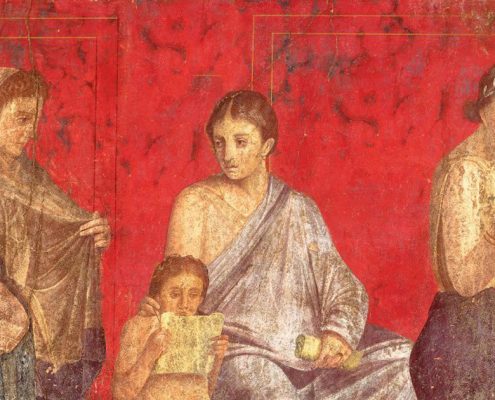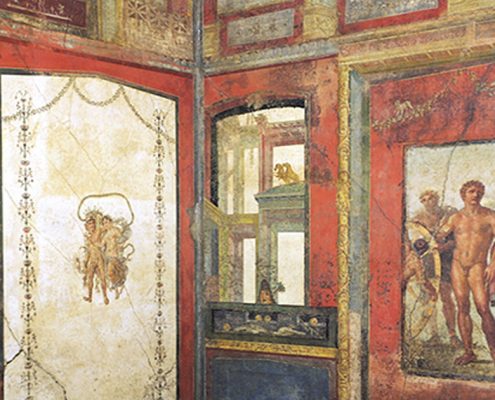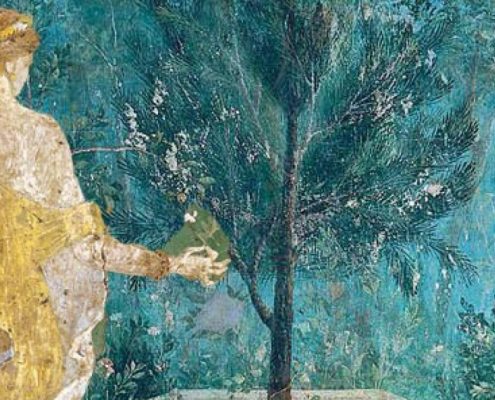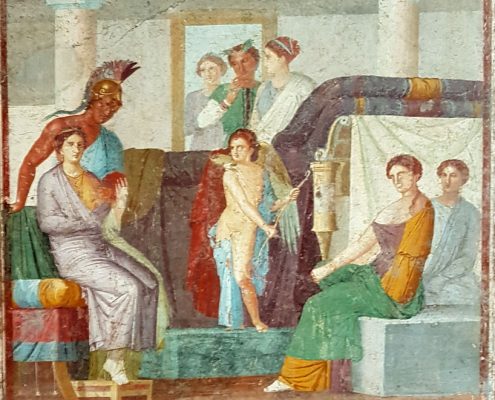TWO-HOUR GUIDED TOUR OF POMPEII AND ITS FRESCOS WITH AN ARCHAEOLOGIST
Private Tour
(admission tickets not included)
Tour Duration
2 Hours
Tour Availability
All year long
Meeting Point
By the Bar Sgambati at Pompeii
What makes this tour special?
Pompeii boasts an area of 65 hectares with 1,500 houses and more than 15,000 frescoes: it is certainly the place with the highest concentration of Roman paintings in the world. For lovers of those Roman artistic creations, along with the classic visit which includes a couple of patrician houses, public baths, streets and its shops, you can also enjoy some of the most beautiful examples of Roman frescoes.
With us you can save your precious time: your guide will purchasethe entrance tickets for you to the excavations at a Skip the Line ticket office.
An expert archaeologist is available throughout the tour who besides explaining countless facts on traditional way of living in Pompeii will also bring to life the techniques used by Roman artists to create those lively and unique walls. In fact you can admire Roman paintings in some museums of the world, but they are out of context, “without soul”: only in Pompeii one can appreciate ancient paintings still “in situ”, on the walls of the original buildings.
The brilliant technique of the Roman fresco
The technique of fresco painting was widespread in antiquity among many other populations, but its technical perfection was achieved in Roman times. The exemplification is, fortunately, very large and ancient writers such as Pliny, the Elder and Vitruvius have written special treatises on the same subject. The colours are fixed not by their penetration into the porosity of the wall facilitated by the wet plaster, as sometimes erroneously said, but by the reaction of the slaked lime, contained in the plaster, with the carbon dioxide of the atmosphere, which creates a thin film of calcium carbonate, which fixes the colors permanently.
Why is Pompeii so important for the Roman frescos?
The rediscovery of Pompeii took place in the last years of the XVI century, but it was not until the mid-18th century that serious archaeological investigations began in the Vesuvian city (1748). Since then the excavations have followed one another relentlessly making it one of the capitals of Roman archeology . The tragic and sudden end of this city has meant that an exceptionally high number of buildings has been preserved in a state that has no equal, including 1500 houses and 15,000 frescoes, some of which are greatly conserved. The study of the frescoes found in many buildings of Pompeii has led to the identification of a certain number of pictorial styles, called precisely “Pompeian styles”, crucial in the study of the history of ancient art. The Pompeian paintings are mostly characterized by a very rich ornamentation and they represent scenes of various kinds such as landscapes, battles, portraits, mythical or erotic scenes.
This post is also available in: Italian







